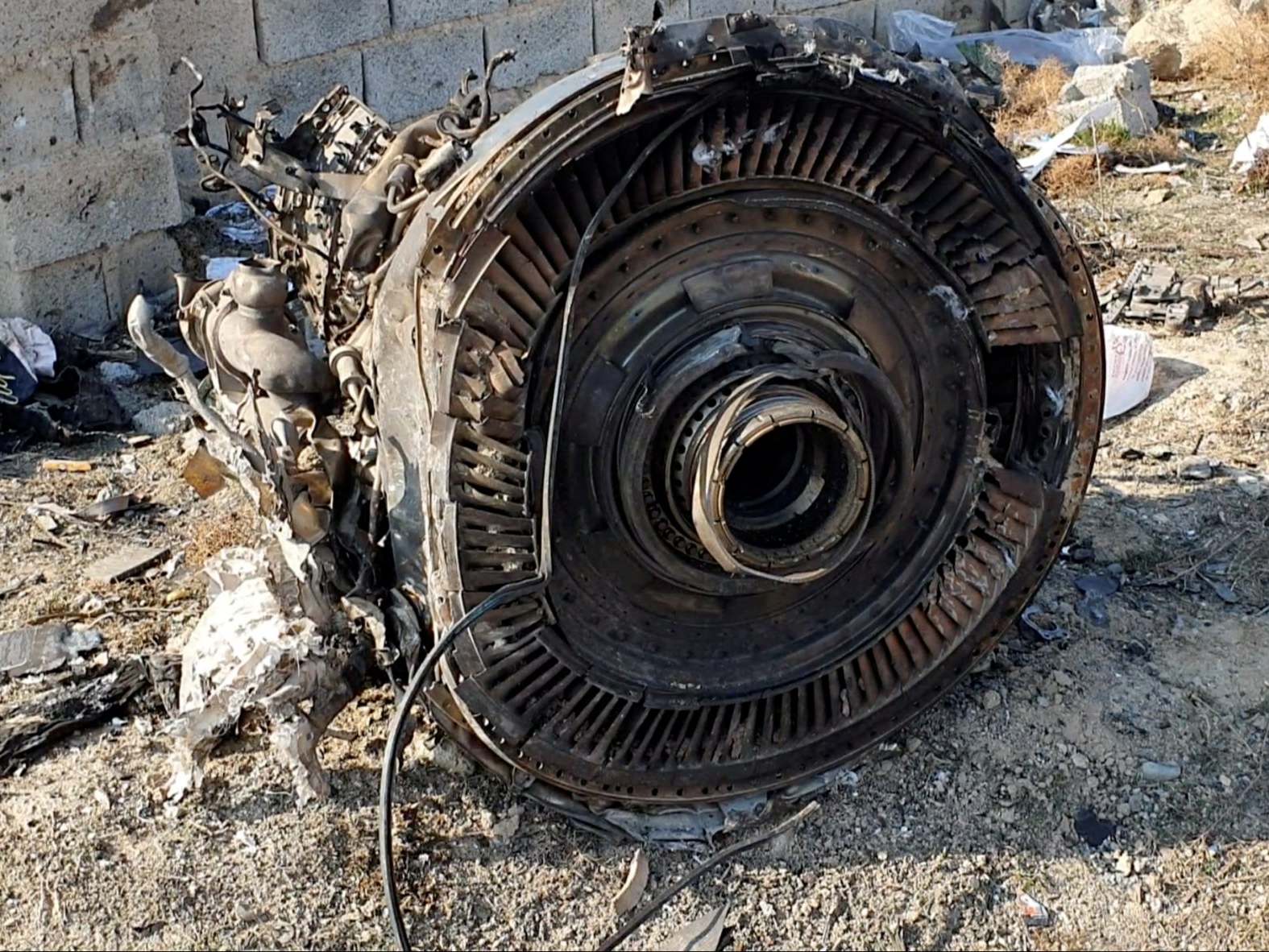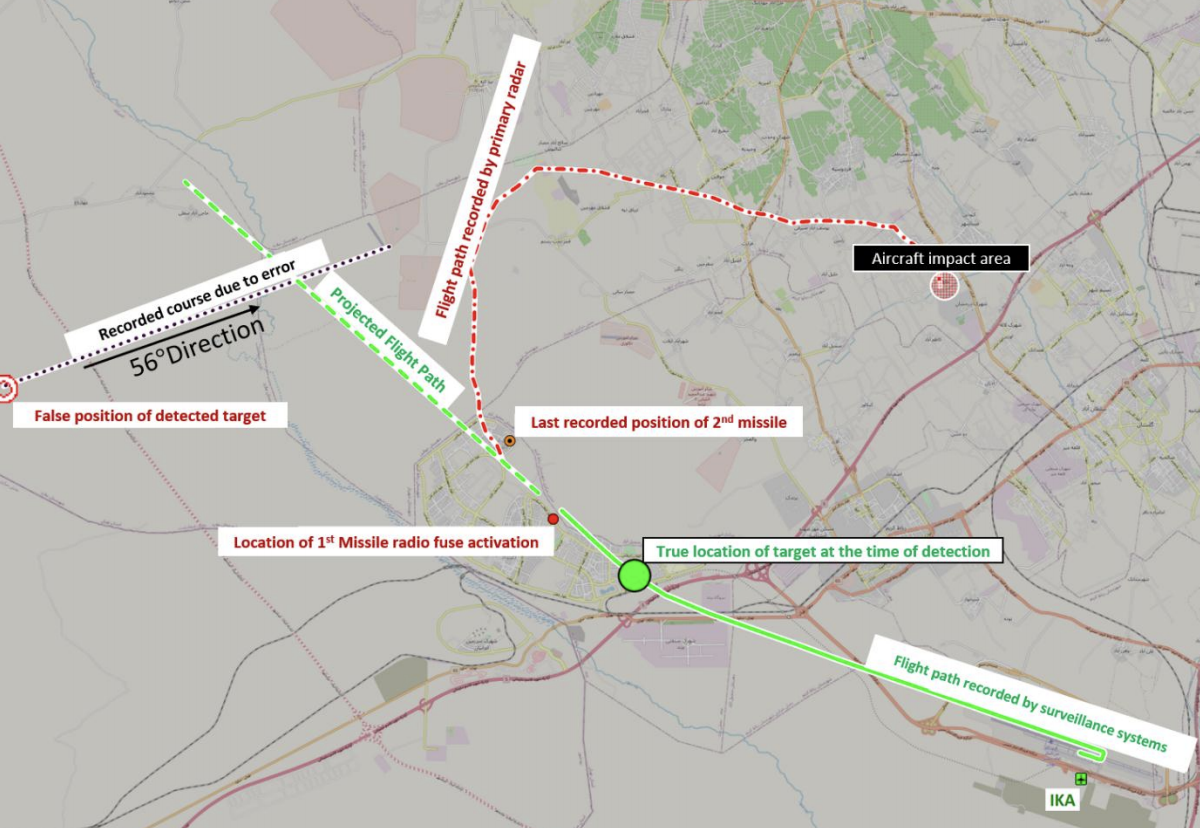Iran military shot down Ukrainian passenger plane after chain of errors
Misaligned threat detection system wrongly indicated flight PS752 was heading from Baghdad to Tehran

All 176 passengers and crew aboard a Ukrainian passenger plane died because of a series of errors made by Iran’s military, a preliminary report has concluded.
The Boeing 737 belonging to Ukraine International was shot down by an anti-aircraft missile in the early hours of 8 January 2020, shortly after take-off from Tehran airport.
Initially the Iranian regime blamed the loss of flight PS752 on mechanical failure. But it soon emerged that the country’s military had shot down the plane in error.
The preliminary accident report from the Civil Aviation Organisation of the Islamic Republic of Iran reveals that an air defence unit misread the heading of the plane, failed to identify it as a passenger aircraft and fired two missiles without authorisation.
Tension in the region had risen sharply immediately before the crash, with Iran firing missiles at bases with US troops in Iraq.
With the country on a war footing, air-traffic control responsibility was passed from civil to military commanders, though passenger traffic was allowed to continue.
Iran’s Air Defence Coordination Centre gave clearance to the flight, which took off normally. But shortly after departure the Ukrainian plane was tracked by an anti-aircraft battery that had recently been moved.
The threat-detection system had not been recalibrated correctly, inducing a 107-degree error that led officers to believe the aircraft was heading for central Tehran on a trajectory that indicated a possible departure from the Baghdad area – where the US has a number of military bases.
This tallies with a report from aviation officials just after the shootdown, which claimed the flight had taken an unusual turn. In fact, it was proceeding as planned, flying northwest and away from the Iranian capital.
“Such a functional failure initiated a hazard chain, which, of course, could be controlled providing other planned measures are implemented,” the report concludes.
The defence system operator tried to send a message to the Coordination Centre with details of a potential target but it did not get through.

The report reveals the chilling sequence of events that followed.
“The system operator began analysing the observable information and categorised the detected target as a threat.
“Although the likelihood of identifying the target for a threat was considerably raised due to his lack of awareness of the 107-degree error, yet still if at this point he had identified the target as a passenger aircraft, the missile would not have been launched.
“At 02:44:41, without receiving any response from the Coordination Centre, the air defence unit operator fired a missile at the threatening target he had detected.
“Under the applicable procedures, if the defence system operator cannot establish communication with the Coordination Centre and does not receive the fire command, they are not authorised to fire.”
The missile hit the aircraft, which caught fire and turned to the right, heading back towards the airport. The report describing graphically the moment it crashed into a playground: “An explosion occurred the moment the aircraft impacted the ground.
“The aircraft then kept hitting the ground and bouncing on a route towards the airport, making the aircraft pieces, victims’ properties, objects and body remains disintegrate completely in a vast area near a residential complex, recreational and sports park, gardens and the surrounding agricultural land.”
A second missile was fired but missed the aircraft.
The report concludes that a repeat is “improbable,” saying: “Measures adopted by Iran’s military sector focusing on each one of the links in the accident chain indicate that the likelihood of occurrence of a similar event has been reduced to an improbable level.
“Therefore, the safety level of airspace for commercial flights from the viewpoint of misidentification is now in normal conditions.”
Join our commenting forum
Join thought-provoking conversations, follow other Independent readers and see their replies
Comments
Bookmark popover
Removed from bookmarks